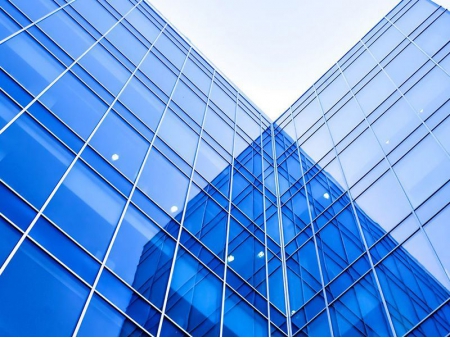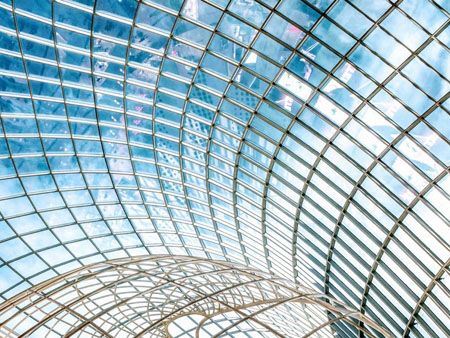Low-E Glass
Color: clear, grey, blue, bronze, green, and etc.
Thickness: 4 mm, 5 mm, 6 mm, 8 mm, 10 mm, 12 mm, and etc.
Size: 2440*1830 mm, 3300*2140 mm, 3300*2250 mm, 3300*2440 mm, 3660*2140 mm, 3660*2440 mm, and etc.
Standard: GB/T18915.1 (China), BS6206 (UK), ANSIZ97.1 (US), AS/NIS 2208-1996 (Australia)
Low-E glass, also known as low emissivity glass, is an ultra-efficient coated glass that provides natural lighting and thermal insulation energy saving. It comes in two types: online and offline, each with unique coatings, processes, manufacturing equipment, and performance.
Online low-E glass is produced using specialized materials to form a coating with low emissivity, which is then integrated with the glass surface after annealing. This type of glass has excellent chemical and mechanical stability, making it ideal for use in green buildings, curtain walls, and electric appliances. With its perfect balance between light transmittance, low reflection, high heat resistance, and environmental friendliness, online low-E glass is a top choice among modern architects.
Offline low-E glass, on the other hand, is produced using vacuum magnetron sputtering coating process with a silver coating that provides superior reflection of infrared light, resulting in better thermal insulation. The silver coating is combined with tin oxide and nickel-chromium alloy layers to increase transparency and protect all coatings as a whole. Available in different levels of transparency and color options, offline low-E glass is a perfect fit for various applications, and its double silver-coated variant is particularly effective at shielding against sunlight radiation while maintaining high transparency.
Both types of low-E glass have good visible light transmission, but offline low-E glass has much higher reflectivity for near-infrared light. Additionally, offline low-E glass has a lower shading coefficient and heat transfer coefficient compared to online low-E glass since it absorbs less and reflects more far-infrared radiation.
- High visible light transmittance, providing excellent natural lighting
- Energy-saving for its low solar energy transmittance and a lower shading coefficient
- Superior insulation performance for its lower U-value, providing a more comfortable indoor temperature both in summer and winter
Online Clear Low-E Glass
| Thickness (mm) | Visible Light | Sunlight | U-Value | Solar Heart Gain Co-efficient (SHGC) | Shading Co-efficient (SC) | |||
| Transmissivity | Reflectivity | Transmissivity | Reflectivity | Summer | Winter | |||
| 4 | 83.5 | 11 | 72.50 | 11 | 2.93 | 3.74 | 0.76 | 0.88 |
| 5 | 82.8 | 11 | 70.20 | 11 | 2.91 | 3.71 | 0.74 | 0.85 |
| 6 | 82.5 | 10 | 70 | 10 | 2.90 | 3.70 | 0.72 | 0.82 |
| 8 | 81.8 | 10 | 68 | 10 | 2.90 | 3.70 | 0.71 | 0.81 |
Online Ultra Clear Low-E Glass
| Thickness (mm) | Visible Light | Sunlight | U-Value | Solar Heart Gain Co-efficient (SHGC) | Shading Co-efficient (SC) | |||
| Transmissivity | Reflectivity | Transmissivity | Reflectivity | Summer | Winter | |||
| 4 | 84.5 | 11.50 | 76.00 | 11.50 | 2.93 | 3.74 | 0.83 | 0.95 |
| 5 | 84.0 | 11.40 | 75.50 | 11.30 | 2.91 | 3.71 | 0.82 | 0.94 |
| 6 | 84.0 | 11.20 | 75.00 | 11.30 | 2.90 | 3.70 | 0.80 | 0.93 |
| 8 | 83.60 | 11.00 | 73.00 | 11.20 | 2.90 | 3.70 | 0.78 | 0.90 |



